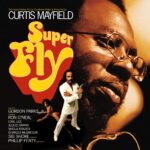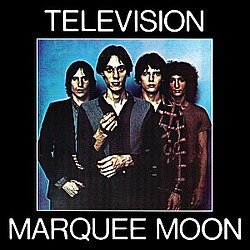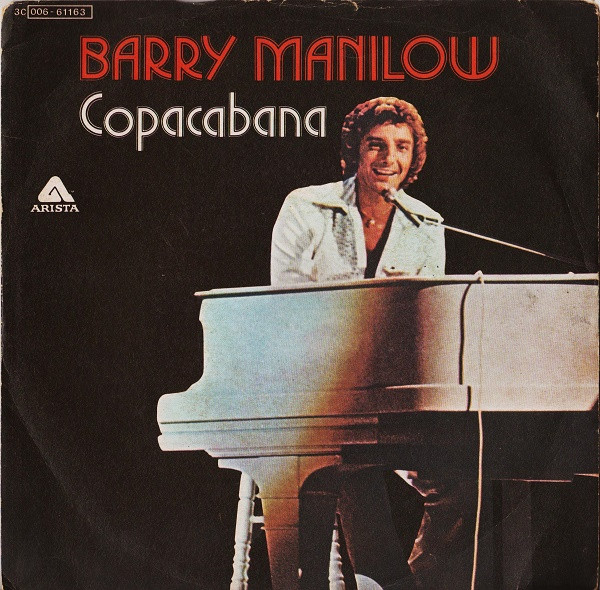 The early 1970s in America were a time of cultural upheaval, political tension, and musical innovation. Amid this period of change, Curtis Mayfield emerged as one of the most visionary voices in soul, funk, and socially conscious music. In 1972, Mayfield released “Pusherman” on the groundbreaking soundtrack album for the film Super Fly, a track that would become both a musical masterpiece and a controversial commentary on urban life. Combining hypnotic grooves, sophisticated instrumentation, and Mayfield’s silky, commanding vocals, “Pusherman” explores the complex realities of drug culture in inner-city neighborhoods, capturing both the allure and the danger of the lifestyle. The song’s bold narrative, infectious rhythm, and moral ambiguity reflect Mayfield’s ability to translate social realities into compelling, unforgettable music.
The early 1970s in America were a time of cultural upheaval, political tension, and musical innovation. Amid this period of change, Curtis Mayfield emerged as one of the most visionary voices in soul, funk, and socially conscious music. In 1972, Mayfield released “Pusherman” on the groundbreaking soundtrack album for the film Super Fly, a track that would become both a musical masterpiece and a controversial commentary on urban life. Combining hypnotic grooves, sophisticated instrumentation, and Mayfield’s silky, commanding vocals, “Pusherman” explores the complex realities of drug culture in inner-city neighborhoods, capturing both the allure and the danger of the lifestyle. The song’s bold narrative, infectious rhythm, and moral ambiguity reflect Mayfield’s ability to translate social realities into compelling, unforgettable music.
“Pusherman” exemplifies Mayfield’s skill in blending entertainment with social commentary. On the surface, the track draws listeners in with its irresistibly smooth bass line, lush string arrangements, and funky guitar riffs. Beneath the groove lies a nuanced story about the life of a drug dealer, examining the economic pressures, social hierarchies, and moral compromises inherent in urban survival. Mayfield’s vocals navigate this complex terrain with a mix of admiration, caution, and melancholy, creating a song that is both seductive and morally challenging. It is a masterful demonstration of his ability to reflect societal realities while crafting music that is immediately captivating.
Curtis Mayfield and the Soundtrack of Social Consciousness
By 1972, Curtis Mayfield had already established himself as a leading figure in soul music, both as the frontman for The Impressions and as a solo artist. His work was notable not only for its musical innovation but also for its engagement with social and political issues. Mayfield’s lyrics often addressed themes of racial inequality, poverty, and empowerment, making him a critical voice during a period of significant social change.
The Super Fly soundtrack, which included “Pusherman,” marked a defining moment in Mayfield’s career. Unlike typical movie soundtracks, which often served as mere background accompaniment, Mayfield’s compositions were integral to the narrative and thematic depth of the film. He created music that reflected the ambitions, struggles, and moral complexity of the characters, offering commentary on the realities of inner-city life while producing tracks that could stand alone as popular hits. “Pusherman” embodies this duality: it is both a narrative song and a groove-laden funk masterpiece.
Lyrics and Storytelling
“Pusherman” presents a detailed, morally complex portrait of a drug dealer operating within the urban landscape. The lyrics are frank, unapologetic, and poetic, presenting the dealer as both a product of his environment and a figure wielding power and influence. The opening lines—“The man is the concept / And the man is the man”—immediately establish the duality of the subject: a symbol of ambition and danger, charisma and menace.
Mayfield’s storytelling is notable for its lack of overt moral judgment. Rather than demonizing the Pusherman, the lyrics explore the character’s motivations, strategies, and social position. Lines like “He’s a man with a concept / He’s the one who can fix it” reflect both admiration and critique, highlighting the allure of control and influence while hinting at the consequences and ethical compromises involved. This nuanced approach challenged listeners to engage with the realities of drug culture thoughtfully, acknowledging complexity rather than resorting to simplistic moralizing.
Musical Composition and Style
Musically, “Pusherman” is a tour de force of funk, soul, and orchestration. The track opens with a smooth, rolling bass line that immediately establishes its hypnotic groove. Guitar licks weave through the arrangement with subtle syncopation, while lush strings and horns provide cinematic depth and richness. Drums maintain a steady, propulsive rhythm, allowing the song to sustain its momentum while giving space for Mayfield’s vocals to shine.
The arrangement is meticulously layered, reflecting Mayfield’s sophisticated understanding of musical texture. Each instrument contributes to the song’s narrative and emotional impact: the bass conveys a sense of movement and determination, the strings evoke drama and tension, and the horns punctuate key lyrical moments with authority. The song’s structure alternates between grooves and lyrical passages, creating a dynamic flow that mirrors the tension, energy, and unpredictability of the Pusherman’s world.
Reception and Cultural Impact
Upon release, “Pusherman” and the Super Fly soundtrack achieved both critical acclaim and commercial success. The album reached high positions on music charts and became a defining work in the evolution of funk and soul. Critics praised Mayfield for his innovative blending of socially conscious lyrics with danceable, commercially appealing music, noting that “Pusherman” exemplified this balance with its sophisticated composition and narrative depth.
The song’s impact extended beyond the music industry. It became emblematic of a new era in urban storytelling, influencing filmmakers, musicians, and cultural commentators. The track’s frank depiction of drug culture sparked debate and discussion, challenging audiences to confront uncomfortable social realities while appreciating the artistry and musical innovation at work. “Pusherman” thus occupies a unique space as both entertainment and social commentary, demonstrating the power of music to provoke thought and dialogue.
Technical Mastery and Vocal Delivery
Mayfield’s vocal performance on “Pusherman” is a masterclass in subtlety and nuance. His smooth, slightly nasal tone conveys authority, confidence, and empathy simultaneously, allowing listeners to connect with the narrative without feeling lectured. The phrasing, emphasis, and inflection create tension and release, enhancing the story’s emotional resonance.
The production, overseen by Mayfield himself, showcases his technical expertise. The interplay between rhythm section, strings, horns, and guitars is seamless, creating a layered soundscape that supports and elevates the vocals. Dynamic contrasts, including shifts in intensity and texture, ensure that the song maintains listener engagement across its full runtime, reinforcing the sense of drama and urgency inherent in the lyrics.
Influence on Music and Popular Culture
“Pusherman” has had a lasting influence on both music and popular culture. Its fusion of socially conscious storytelling and infectious funk grooves paved the way for future artists in soul, hip-hop, and R&B. Many hip-hop artists in the 1980s and 1990s sampled Mayfield’s tracks, drawn to their grooves, melodic richness, and thematic depth. “Pusherman” in particular has been cited as a key influence on the intersection of funk, urban storytelling, and socially aware music.
The song also continues to resonate as a cultural touchstone, frequently referenced in media, film, and literature exploring urban life, crime, and social struggle. Its narrative sophistication and musical complexity ensure that it remains relevant, providing insight into the complexities of urban survival and the moral ambiguity of the characters it portrays.
Legacy and Enduring Appeal
Decades after its release, “Pusherman” endures as one of Curtis Mayfield’s most iconic and influential works. It exemplifies his ability to craft music that is both sonically compelling and socially significant, bridging the gap between entertainment and ethical reflection. The track’s lush arrangements, hypnotic groove, and morally complex storytelling continue to captivate listeners, ensuring its place in the pantheon of classic funk and soul music.
“Pusherman” also reflects Mayfield’s broader legacy as a socially conscious artist, demonstrating his commitment to addressing issues of poverty, inequality, and urban life through music. It stands as a testament to the power of song to illuminate difficult realities while remaining accessible, engaging, and artistically groundbreaking.
Conclusion: The Enduring Power of “Pusherman”
Released in 1972, Curtis Mayfield’s “Pusherman” remains a masterful blend of funk, soul, and social commentary. Its hypnotic grooves, lush orchestration, and compelling narrative make it a standout track in Mayfield’s career and a seminal work in the evolution of urban storytelling in music. The song’s moral ambiguity, lyrical sophistication, and musical brilliance invite listeners to confront the complexities of urban life, while its irresistible rhythm ensures it remains endlessly listenable.
“Pusherman” exemplifies the unique ability of music to entertain, inform, and provoke thought simultaneously. Curtis Mayfield’s artistry transforms a story of urban survival and moral compromise into a universal meditation on power, ambition, and consequence. Its influence on generations of musicians, as well as its continued relevance in popular culture, ensures that “Pusherman” is more than a song—it is a cultural touchstone, a groove-laden reflection on society, and a testament to the enduring power of Curtis Mayfield’s vision.


